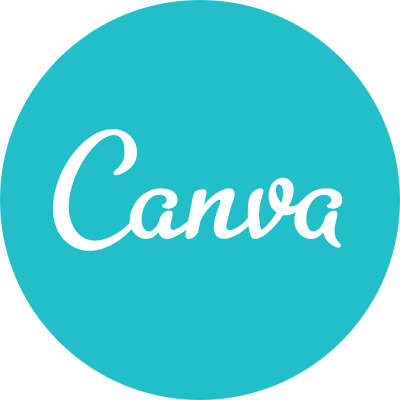How I Started A 7-Figure Online Language Learning Platform Thanks To SEO
Hello! Who are you and what business did you start?
I am the CEO and co-founder of the Live Lingua online language learning platform. Live Lingua offers a unique and immersive approach to mastering a new language, as it pairs users who want to learn Spanish, French, German, Chinese, and more with their own hand-picked, certified, native-speaking tutor for online teaching sessions. I build and also help others build 6- and 7-figure businesses on a bootstrap budget using SEO.

What's your backstory and how did you come up with the idea?
I came up with the idea because of the Mexican swine flu. My wife and I started our first business back in 2008, which was a brick-and-mortar Spanish language immersion school in Mexico. My wife is Mexican (but went to university in the US) and was my Spanish teacher when I arrived in Mexico as a volunteer with the Peace Corps. We launched our school – and got married – at the end of 2007 with only $2000 US in our bank account. Luckily, the school was a success from day one and was fully booked within weeks.
Then in March of 2009, the Mexican swine flu appeared. Within weeks they had closed off the borders of Mexico (and most of our students came from outside of the country) and our students canceled. We had just started a few months ago and did not have enough savings to keep operating for more than a few weeks.
It was then that my wife had the idea of contacting our previous students to see if they wanted to have classes over Skype. It worked better than I expected. So I decided to launch a website and offer the classes to the public, just to see if anybody would sign up.
The swine flu ended in eight weeks. It did not end up being a global pandemic. So within a few weeks, our brick-and-mortar school was full again. But to our surprise, our online classes kept growing. Within six months it was generating more revenue than our brick-and-mortar school for just a few hours a week of work.
At that point, we decided to sell our physical school (it took three years to sell) and focus on the online school. In 2012, we rebranded it as Live Lingua, and we have been growing at about 20% a year every year since then.

Take us through the process of designing, prototyping, and manufacturing your first product.
I’ll be honest here, when we first started Live Lingua, it was not with a grand plan to build a 7-figure business. We were doing it simply to find an alternative source of income for a business that was suffering from a crisis out of our control. This means our design and prototyping were done with that in mind.
Our startup costs were $59.99 US. That is what it cost back then to get a domain and one year of hosting. I found a free website template online and got started.

What does that mean? It means the first version of our website was awful. It was a simple 5-page website with a contact form. The homepage provided information on what we did with some really bad stock photos, and we had a pricing page that was just a table with costs, as well as a way for potential customers to email us.
Find one channel that works for you in the beginning—like SEO—and focus on that to start. Don’t get distracted by all the other channels.
Then as we started getting students and, more importantly, a staff of teachers, we needed a way to track them. This was back in 2008 and there were not the options there are today. So we used documents in Google Drive to track everything. It was a very manual process.
But this was enough. We did not get stuck in ‘analysis paralysis’. We launched our product, started getting customers, and then kept on iterating quickly based on paid customer feedback.
Describe the process of launching the business.
You may see a pattern here; there was no planned launch process for this business. We had an idea that we thought may work, so we created a website to offer it and worked to get it in front of the right people.
To do so, we used SEO (Search Engine Optimization). This was a free —but time-consuming— way to get us to show up for some Google searches. This is a long-term game, as you don’t see results for 3-6 months at least.
With us, we started seeing our first customers after about three months. By six months, we had more students than we could handle with just one teacher—my wife—and had to start hiring. By 12 months, we had an ARR of over six figures.
Since launch, what has worked to attract and retain customers?
We have been around for 13 years now, so we have done a lot since our launch to attract and retain customers.
If you have a business idea, just throw up a website and promote it. Get feedback. Most of it will probably be bad, but don’t take it personally; just learn from it and improve.
One of the biggest things we did was add tons of digital material to the paid classes we were offering. This was a great way for us to increase the value of our offering without increasing the costs at the end of our services. There were, of course, the development costs, but once we had it done, we were finished. Our area of language education does not change that much each year.
We expanded our traffic sources from SEO to include other channels, such as paid ads (Facebook, Google, etc.), and we also launched a podcast that gets about 1500 downloads a day. We have even recently started a YouTube channel with weekly videos.
My advice to founders who are just starting is to find one channel that works for you in the beginning—like SEO—and focus on that to start. Don’t get distracted by all the other channels. Once you have cracked the code of that one channel and have written great SOPs so others on your team can replicate your success, then you should start diversifying.

How are you doing today and what does the future look like?
Today we are a 7-figure company, but we still run a very tight ship. Our core team—not including contractor teachers—is just nine people including myself.
We continue to be a 100% virtual company, meaning we don’t waste any money on rent and other expenses that don’t add value to our students. It also allows our team to work from anywhere they want in the world, which is a great value add to most of us who love to travel.
The future looks good. This past year we grew about 30%, which is allowing us to bring on some more key staff members we have been wanting to hire for years. We are also adding some great new features that we hope will allow us to increase our price without increasing overhead.

Through starting the business, have you learned anything particularly helpful or advantageous?
Learn to love geo-arbitrage. There are two levels to this; the first is what most people know about: the level where you hire a great team member from another country. This not only saves you money but also helps you support somebody and their family.
The second option is one that most people don’t consider when starting a business. This especially applies to an online business. That is the choice of you moving to another country to build your business. This does not mean you have to register the business there; it can stay registered in your own country.
What this means is you get to move to a place with a much lower cost of living, so you can focus full time on your new business without any decrease in your standard of living (you might even experience an increase). The example from my life is moving to Mexico—I was able to build LiveLingua.com and my new business, PodcastHawk.com (a SaaS product that helps people get booked on podcasts), all while enjoying $1.00 US tacos, going to the beach, having a cleaning lady and a cook, and doing all this for a fraction of the cost of living in the US.
What platform/tools do you use for your business?
We have been at this for a long time, so when we started there were no real full-suite CRMs for us to use. This means our entire business is custom-built. We recently moved our systems to a more modern architecture called Laravel.
On the backend of our business, we use the standard stack of software for online business, which includes Notion for project management, Slack for communications, and Google Workspace for email management and files.
What have been the most influential books, podcasts, or other resources?
I recommend Millionaire Next Door. The book is a bit dated concerning the numbers now, but it talks about how most millionaires are really made and how they live. Spoiler: they don’t buy yachts and private jets.
Advice for other entrepreneurs who want to get started or are just starting?
If you have a business idea, just throw up a website and promote it. Don’t worry about the page or the offer being perfect—just launch something. Then wait for the feedback to come in. Most of it will probably be bad, but don’t take it personally; just learn from it and improve. Do this day in and day out and within a year or two, you will have a growing business.
To increase conversion rates, it is essential to A/B test faster than all your competitors. Constantly be testing and improving every step of your sales funnel. Test and tweak your marketing emails to improve open and click-through rates. Also, your call center scripts should be tweaked constantly to see if you could raise the conversion by even a fraction of a percent. The faster you can test, the faster you will find the best results, and the faster your business will grow.
It is so important to work on one thing until completion before starting something else. It does not matter how big or small. Don't stop answering an email to check a text message. Don't stop working on your report to just "hop on Facebook for one minute" (which always ends up being 30 minutes). Don't start a new business when your current one is starting to do well.

Are you looking to hire for certain positions right now?
We are building out our marketing team. At this time, we are looking for full-time staff members that specialize in different marketing channels such as Google Ads, Affiliate Marketing, and B2B sales.
Where can we go to learn more?
If you have any questions or comments, drop a comment below!

Download the report and join our email newsletter packed with business ideas and money-making opportunities, backed by real-life case studies.

Download the report and join our email newsletter packed with business ideas and money-making opportunities, backed by real-life case studies.

Download the report and join our email newsletter packed with business ideas and money-making opportunities, backed by real-life case studies.

Download the report and join our email newsletter packed with business ideas and money-making opportunities, backed by real-life case studies.

Download the report and join our email newsletter packed with business ideas and money-making opportunities, backed by real-life case studies.

Download the report and join our email newsletter packed with business ideas and money-making opportunities, backed by real-life case studies.

Download the report and join our email newsletter packed with business ideas and money-making opportunities, backed by real-life case studies.

Download the report and join our email newsletter packed with business ideas and money-making opportunities, backed by real-life case studies.





























